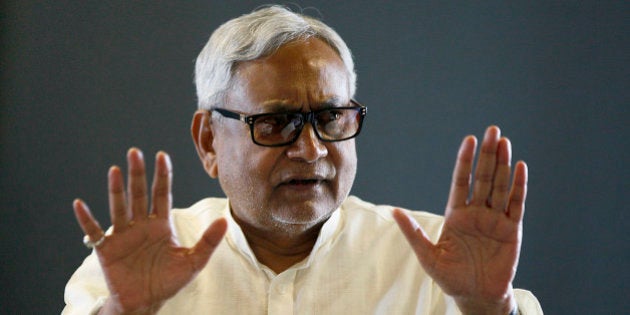
“Advantage BJP as Bihar gets ready,” said the Indian Express front-page lead headline on Wednesday morning. On the web, the story was updated at 3 pm. The headline was changed to, “Surge for BJP-led NDA alliance in Bihar’s urban areas.”
The two headlines have very different implications. The result of the Lokniti-CSDS survey is that the BJP-led NDA has a 4% lead in the Bihar Assembly elections, as of September last week. The results have been published by the Indian Express under those headlines.
The first headline – Advantage BJP – emphasises this 4% lead. However, the new headline emphasises that this 4% lead is coming mainly from urban areas. Only 11.3% of Bihar’s population lives in urban areas.
In other words, Sanjay Kumar and Suhas Palshikar seem to have drawn the wrong conclusion from their own survey data. If anything, the CSDS-Lokniti survey shows that the Nitish-Lalu Grand Alliance is ahead.
Countless articles have been saying that the lower OBCs, known as EBCs or the Extremely Backward Classes, are the swing vote in the Bihar election. Estimated to be 24-30% of the population, EBC voters don’t have fixed ideological allegiances, unlike Muslims, Yadavs, Kurmis or upper castes.
What does the Lokniti-CSDS survey say about the EBCs? It says that there is a “low” consolidation of the EBCs in favour of the NDA. The Mahadalit factor has been said to favour the NDA, because their leader Jitan Ram Manjhi has joined the NDA. What does the Lokniti-CSDS say about the Mahadalits? That their consolidation for the NDA is “moderate”.
The survey says that only the Hindu upper castes and the Paswans (who form a majority of the total Dalit vote) are solidly behind the NDA. So if the NDA has not achieved EBC and Mahadalit consolidation in its favour, how can it have a 4% lead in Bihar?
While the data in a chart says there is low consolidation of EBCs for the NDA, the article first says that the EBCs are divided 50-50, and then talks about the EBC vote as though it is entirely with the NDA.
Buried in the caveats in the end, it says, “Two, BJP’s and NDA’s support, though handsome, is too concentrated in urban constituencies and particular regions. So, the figure of 42 per cent can be misleading in the sense that those votes may not necessarily add further to the seats the NDA may win.”
So if they acknowledge that the figure has an urban bias and could thus be misleading, why are they drawing the big-picture conclusion from 4% lead?
The article says that in urban areas the BJP has a 20% lead but in rural areas it has a 2% lead. Travelling in the past few days in north-east Bihar, this writer found that many EBCs are hesitant to open up, or say they would vote for BJP if they think you are a BJP supporter.
If you spend some more time with them, you realise that they were either lying or still making up their minds.
A detailed break-up of which castes think Nitish Kumar should be given another chance as chief minister, shows that it is actually Advantage Grand Alliance, notwithstanding the over-all numbers the survey has gathered.
Given how deeply this election has become a personality contest between Narendra and Nitish, it is significant that the survey finds that 63% voters are satisfied with Nitish Kumar as chief minister, whereas a lower 54% said they were satisfied with Narendra Modi’s performance as prime minister.
Given that 53% per cent respondents said development was more important than caste in this election, this can only be to Nitish’s advantage.
The survey found high numbers of people satisfied with Nitish Kumar’s performance in building roads, improving power supply, women’s safety, law and order and communal harmony.
It also found 27% people wanting Nitish Kumar as chief minister this time, as opposed to 14% support for the BJP’s Sushil Kumar Modi. A total of 41% wanted someone from the Grand Alliance to be chief minister, as opposed to 35% support for an NDA chief minister.
Perhaps what these numbers – and these are the numbers of only a survey – show is that there is a close contest in Bihar. No surprise that the Indian Express has changed the article’s headline.



Contact HuffPost India